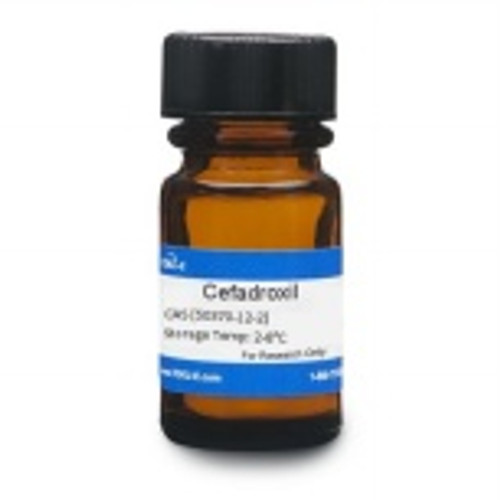Cefadroxil is a first generation cephalosporin antibiotic similar in structure and spectrum as cefalexin and cephradine. Cefadroxil exhibits bactericidal activity against a wide spectrum of bacteria.
| Mechanism of Action | Cephalosporins interfere with PBP (penicillin binding protein) activity involved in the final phase of peptidoglycan synthesis. PBP’s are enzymes which catalyze a pentaglycine crosslink between alanine and lysine residues providing additional strength to the cell wall. Without a pentaglycine crosslink, the integrity of the cell wall is severely compromised and ultimately leads to cell lysis and death. Resistance to cephalosporins is commonly due to cells containing plasmid encoded β-lactamases. |
| Spectrum | Cefadroxil is a broad spectrum antibiotic and has shown to be effective in treating skin and UTI infections caused byStaphylococcus and Streptococcus species. |
| Microbiology Applications | Cefadroxil is commonly used in clinical <em>in vitro</em> microbiological antimicrobial susceptibility tests (panels, discs, and MIC strips) against gram positive and gram negative microbial isolates. Medical microbiologists use AST results to recommend antibiotic treatment options for infected patients. Representative MIC values include:
|
| Molecular Formula | C16H17N3O5S |
| References | Georgopapadakou, N. H. "Mechanisms of Action of Cephalosporin 3'-quinolone Esters, Carbamates, and Tertiary Amines in Escherichia Coli." American Society for Microbiology 37.3 (1992): 559-65. Antimicrobial Agents and Chemotherapy. Web. 21 Aug. 2012. Buck, R. E., and Et. Al. "Cefadroxil, a New Broad-Spectrum Cephalosporin." Antimicrobial Agents and Chemotherapy 11.2 (1977): 324-30. Ncbi.gov. Web. 11 Oct. 2012. |
| MIC | Bacteroides fragilis (NCTC 9343)| 32|| Enterococcus faecalis (ATCC 29212)| >32|| Escherichia coli (ATCC 25922)| 8|| Escherichia coli (NCTC 10418)| 8|| Haemophilus influenzae (ESBL)| <1 - >16|| Haemophilus influenzae (non-ESBL)| ≤1 - >16|| Moraxella catarrhalis| ≤1 - >16|| Neisseria gonorrhoeae (penicillin-resistant)| 2 - 8|| Neisseria gonorrhoeae (penicillin-susceptible)| 0.25 - 64|| Pseudomonas aeruginosa (ATCC 27853)| >128|| Pseudomonas aeruginosa (NCTC 10662)| >128|| Staphylococcus aureus (ATCC 29213)| 2|| Staphylococcus aureus (ATCC 6571)| 1|| Staphylococcus pseudintermedius| 0.25 - 8|| Streptococcus pneumonia (penicillin-intermediate)| ≤1 - >16|| Streptococcus pneumonia (penicillin-resistant)| ≤1 - >16|| Streptococcus pneumonia (penicillin-susceptible)| ≤1 - >16|| |



